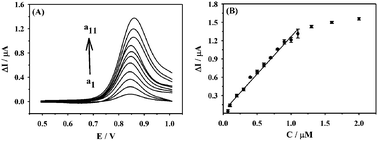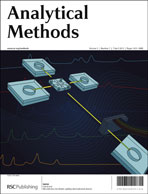As a kind of poisonous organic pollutant, anthracene-9-carbonxylic acid (9-ACA) is very harmful to the environment and human health, thus the qualitative and quantitative determination of 9-ACA is of great significance. In this paper, an ultrathin film modified glassy carbon (GC) electrode was prepared by electropolymerization of 5-amino-1,3,4-thiadiazole-2-thiol (AMT) on the GC electrode (p-AMT/GC) and used to detect 9-ACA. Compared to the GC electrode, the p-AMT/GC electrode shows more excellent stability and reproducibility, and meanwhile exhibits higher electrochemical response of 9-ACA due to the unique properties of p-AMT such as large surface area, good electronic properties and catalytic ability. The linear range for 9-ACA detection is from 7.0 × 10−8 M to 1.1 × 10−6 M and the detection limit is 1.2 × 10−8 M (S/N = 3). Finally, the proposed methodology was successfully applied to the detection of 9-ACA in water samples.
You have access to this article
 Please wait while we load your content...
Something went wrong. Try again?
Please wait while we load your content...
Something went wrong. Try again?


 Please wait while we load your content...
Please wait while we load your content...